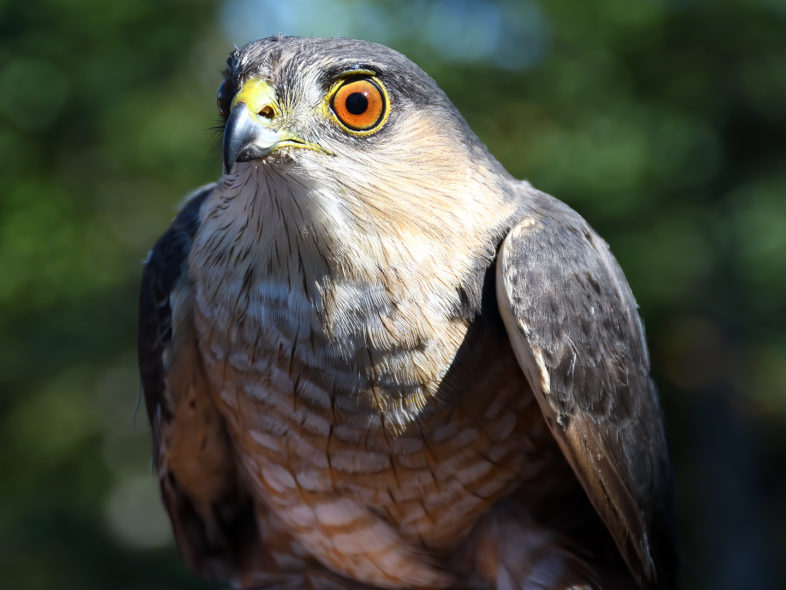
An adult male Sharp-shinned Hawk casts a defiant look after banding and just prior to release on the Mt. Mansfield ridgeline, 17 June 2021. © Michael Sargent
Cold fronts on Mt. Mansfield work wonders to keep black flies at bay, but they tend to suppress avian activity and frustrate bird banders by reducing mist net captures. So it was for VCE’s Week 3 field session of 2021. Having postponed our overnight visit 24 hours due to Tuesday’s thunderstorms on the ridgeline, we arrived on Wednesday evening to brisk NW winds and unseasonably cool temperatures. Our 27 mist nets were up by 6:30 pm. We exulted in the absence of black flies, which had been thick a week earlier, but birds were uncharacteristically quiet for mid-June.
By nightfall, we had captured only ten individuals. However, quality trumped quantity., Our undisputed highlight was an 8 year-old female Bicknell’s Thrush (BITH) that we had banded as a yearling in June of 2014. We affixed her with a tiny GPS tag (and put a second tag on a 6 year-old male moments later), shaking our heads in wonder at this species’ hardiness, endurance, and site tenacity. Without a careful review of VCE’s 30-year banding database, I can’t claim that this is the oldest female on record, but she could well be. Following last week’s capture of a record-tying 11 year-old male, it’s astonishing to contemplate that these veteran BITH manage to survive so many years of rugged mountaintop living, perilous long-distance migrations to the Caribbean (and back), hungry Sharp-shinned Hawks, and all the other rigors of life as a small songbird.
By morning’s end on Thursday, our nets had yielded only 33 total captures, a disappointingly low number for mid-June, and one likely due to the chilly, breezy weather. As always, a few surprises added spice to our session. These included a feisty yearling male Sharp-shinned Hawk, 2 out-of-habitat Red-eyed Vireos, and a Canada Warbler. Also notable—mainly for their seasonal tardiness—were our first Swainson’s Thrush and Purple Finch captures of 2021. Our overall tally included:
Sharp-shinned Hawk — 1 new yearling male
Yellow-bellied Flycatcher — 1 new bird of unknown sex
Red-eyed Vireo — 2 new (1 female with regressing brood patch)
Bicknell’s Thrush — 4 (2 new yearling males; 1 return female from 2014 (with full incubation patch) and within-season recapture of male banded in 2016
Swainson’s Thrush — 2 new yearling males
Purple Finch — 2 new: female w/brood patch, yearling male
Dark-eyed Junco (Slate-colored) — 1 return male from 2020
White-throated Sparrow — 4 (3 new, 1 return male from 2019)
Blackpoll Warbler — 6: 2 new (male and female with full incubation patch) 2 returns from 2020, 2 within-season recaps
Yellow-rumped Warbler (Myrtle) — 9: 4 new, return male and female from 2019, 3 within-season recaps
Canada Warbler — 1 new yearling male
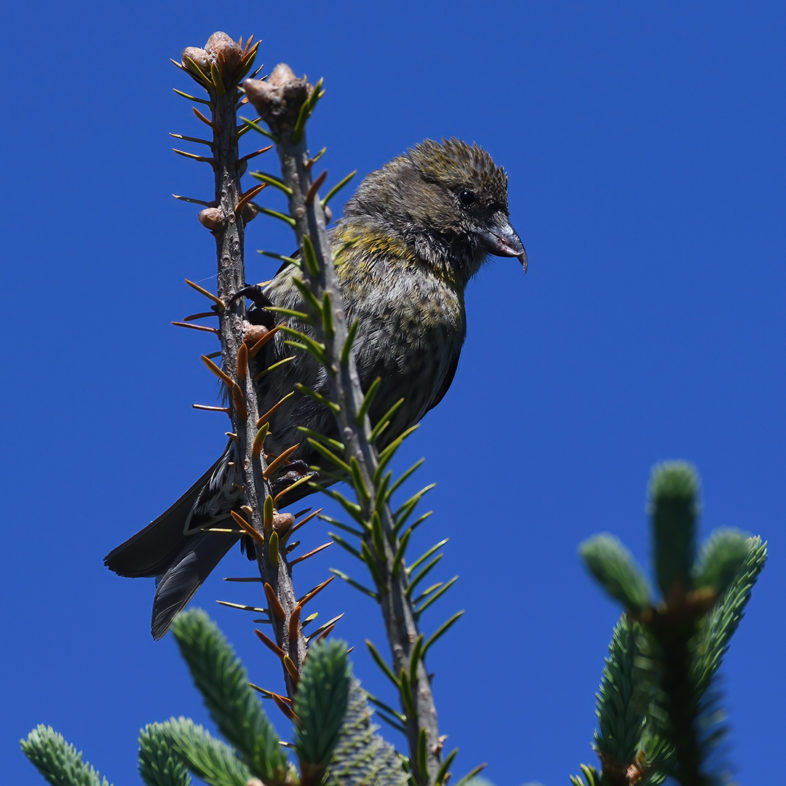
A solo White-winged Crossbill made a brief appearance at the VCE banding station on Mt. Mansfield, 17 June 2021. © Michael Sargent
Perhaps our most surprising avian encounter took the form of a female White-winged Crossbill that briefly but obligingly perched 3 meters above our banding site, allowing Mike Sargent to snap a few quick photos.
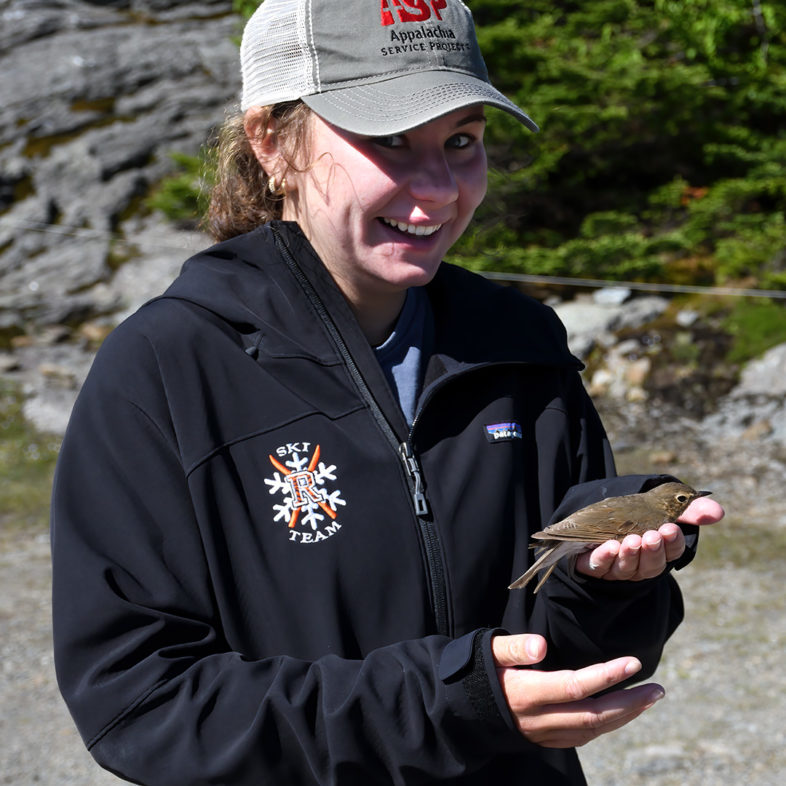
Grace Bucci beams as she releases a banded Swainson’s Thrush on Mt. Mansfield, 17 June 2021. © Michael Sargent
And, as always, our weekly banding session was enlivened and made more rewarding by visitors who eagerly shared the experience, gaining a greater appreciation of mountaintop birds and VCE’s efforts to study them.
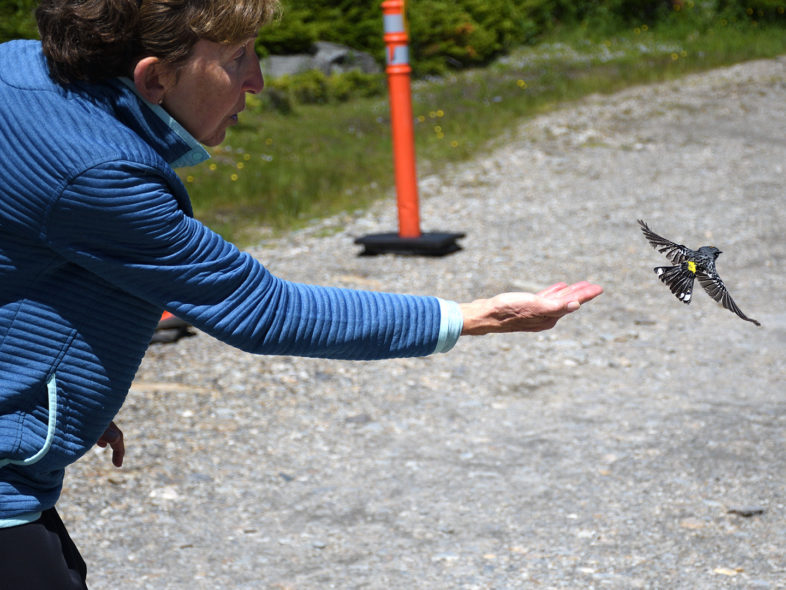
Ann Wittpenn releases a banded male Yellow-rumped (Myrtle) Warbler on Mt. Mansfield, 17 June 2021. © Michael Sargent
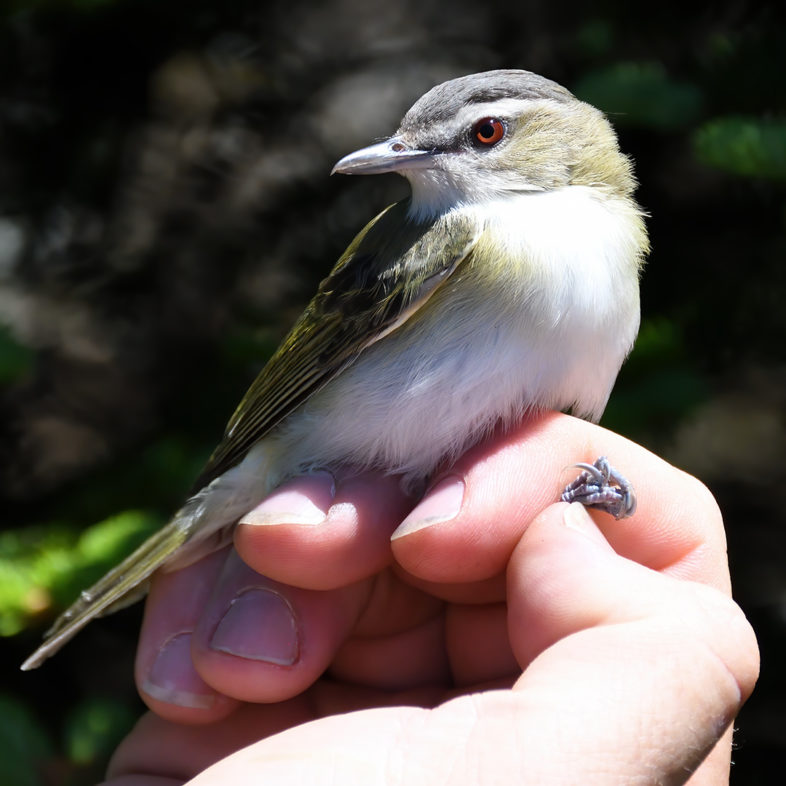

Love reading your posts.